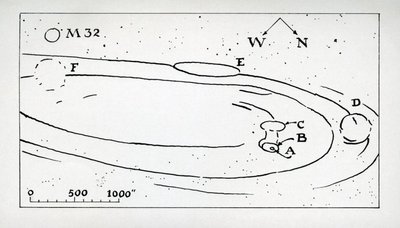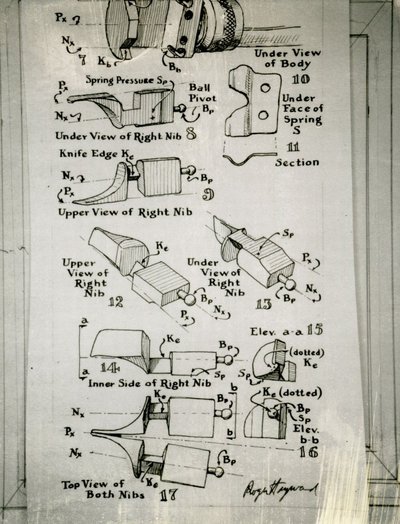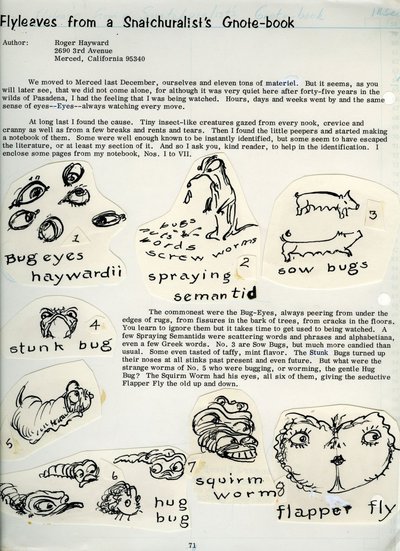At the onset of retirement, Roger engaged in many activities that had fallen to the wayside during his more professionally oriented years. He took up an interest in clocks, including one that his father had built, and continued to work on his father’s old jeweler’s lathe. He delved further into amateur color and optics research, and corresponded with many individuals about his findings while seeking an avenue to publish his work. He also undertook research to measure aspects of the nearer galaxy and wrote a paper on magnetic loops, titled “Evidence of Explosions in some of the Nearer Galaxies,” that was published by the Astronomical Society of the Pacific and appeared often in his personal correspondence. For nearly a decade, Roger tried to design, patent and sell a model pen to pen manufacturers and retailers. He worked hard with his friend Bradley Lewis to bring the idea to fruition, but the endeavor was ultimately unsuccessful following their attainment of an initial patent, shifting eventually to a slow abandonment of the project. Later Roger shared his thoughts about the patent system, in general, with its inherent bias towards large firms and profit maximization:
“This is a very old racket and points to one of the real evils of the present patent system. The patentee is cheated out of royalties, and the public is cheated out of the value of a new and better product.”
Before focusing on the pursuit of more astronomy-oriented research, Roger sought to publish a map of the Earth’s magnetic fields, followed by a theory on convection cells in the Earth’s mantle. He tried extremely hard to push his projects to print, submitting the papers to several journals and societies while requesting help from various associates. He was ultimately unsuccessful for one of his favored projects and eventually abandoned the entire branch of geology. Though he succeeded in publishing several of his research papers in the Journal of the British Astronomical Association, the Journal of the Optical Society of America, and the Journal of the Astronomical Society of Victoria, Roger voiced a great deal of frustration on numerous occasions about the elite nature of professional journals and societies.
Roger also began to focus more intently on the creation and solving of puzzles, with particular focus on something that he called “Blivets - Research and Development,” which included the depiction of impossible geometric designs reminiscent of M. C. Escher. The designs were eventually presented for publication, followed by various sets of “doodles” and whimsical caricatures of humans and animals in the Worm Runner's Digest, a section of a biological psychology journal put out by the Mental Health Research Institute at the University of Michigan. According to Roger, the drawings exhibited experimentation into representational perception, where a line drawing could have different meanings depending on how a person viewed it. Roger also published rhymes in the “Wit Twisters” section of the Saturday Review and had solutions to various puzzles published in Recreational Mathematics. He developed an engaging relationship with a man named Martin Gardner, and the two spent a considerable amount of time discussing the works of L. Frank Baum, Lewis Carroll and puzzles therein.

Pen and ink drawing by Roger Hayward of the Andromeda Galaxy and Messier 32 satellite galaxy, 1963. More images here

Illustration of the nibs of the Hayward-Lewis Pen. More images here

Illustrations by Roger Hayward from "Flyleaves from a Snatchuralist's Gnote-book," 1974. More images here
